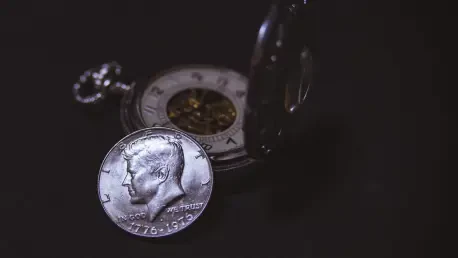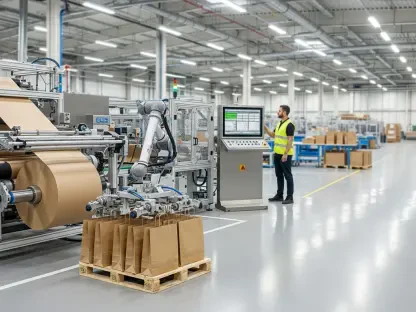In a world where textiles often evoke comforting images of home and heritage, the American Folk Art Museum (AFAM) is poised to challenge these perceptions with a transformative exhibition titled “An Ecology of Quilts: The Natural History of American Textiles,” running from late September through early March next year. This groundbreaking show, curated with meticulous care by Emelie Gevalt, Deputy Director and Chief Curatorial & Program Officer, and Austin Losada, Art Bridges Fellow, draws from an impressive collection of over 600 quilts to present around 30 pieces spanning the 18th to 20th centuries. Far from merely displaying intricate designs or personal narratives, the exhibition offers an eco-critical perspective, illuminating the profound connections between quiltmaking as a quintessential American art form and the environmental, social, and industrial forces that have shaped its history. By delving into these complex layers, the museum invites visitors to reconsider quilts as more than nostalgic artifacts, but as tangible links to broader global systems.
Exploring the Roots of Quiltmaking
Materials and Their Origins
The foundation of quiltmaking lies in the raw materials that form its very fabric, a story of cultivation and labor that often goes untold. Cotton, wool, linen, and silk—these fibers were not merely gathered but grown through intensive agricultural systems that spanned continents. In the American South, cotton fields stretched endlessly, their harvests reliant on the grueling toil of enslaved individuals whose lives were bound to the land. This labor, coupled with the extraction of wool from vast sheep farms and silk from distant trade routes, reveals a hidden narrative of human cost beneath the beauty of each quilt. The exhibition meticulously traces these origins, showing how the act of stitching a quilt was never an isolated endeavor but one deeply tied to global networks of exploitation and exchange, urging a reevaluation of the craft’s seemingly innocent roots.
Beyond the human toll, the environmental impact of producing these materials casts a long shadow over quiltmaking’s history. Large-scale farming to meet the demands of textile production often led to soil depletion, deforestation, and water overuse, altering landscapes irreversibly. The processing of raw fibers into usable fabric further compounded this strain, with early industrial methods introducing pollutants into rivers and streams. As the exhibition highlights, even a craft celebrated for thrift—through the repurposing of scraps—was complicit in a cycle of resource depletion that affected ecosystems far beyond the quilter’s home. This perspective challenges the romanticized view of quilts as sustainable, instead positioning them within a broader dialogue about the ecological consequences of human creativity and consumption.
Global Networks and Industrial Shifts
Quiltmaking, often seen as a solitary act of domestic art, emerges in this exhibition as a collective effort woven into vast global trade networks. Merchants transported fibers and fabrics across oceans, connecting American quilters to farmers in distant lands and dyers in colonial outposts. The introduction of innovations like the cotton gin revolutionized production, making cotton cheaper and more accessible, yet also intensifying the reliance on enslaved labor. This interconnected web, spanning from rural fields to urban markets, underscores that each quilt carries within it the labor and resources of countless unseen hands, reshaping the understanding of folk art as a product of worldwide collaboration rather than individual craft.
The industrial shifts that transformed textile production also left an indelible mark on quiltmaking’s evolution. As mechanized looms and factories emerged, the availability of mass-produced fabrics altered the craft’s landscape, moving it away from painstaking handwork toward efficiency. While this democratization allowed more people to engage in quiltmaking, it often came at the expense of environmental health, with industrial processes prioritizing speed over sustainability. The exhibition draws attention to these trade-offs, illustrating how technological progress, while innovative, frequently disregarded the long-term impact on natural resources, prompting a critical look at how industrial advancements redefined the art form’s ecological footprint.
Themes of Color, Fiber, and Pattern
The Story of Color
Color in quilts tells a story far deeper than aesthetic appeal, revealing a history steeped in both beauty and brutality. In 18th-century South Carolina, indigo dye, often dubbed “blue gold,” was a prized commodity that fueled colonial economies, yet its cultivation depended heavily on the forced labor of enslaved individuals under harrowing conditions. The vibrant hues that adorned early American textiles thus carried a somber weight, embodying a legacy of exploitation. The exhibition meticulously unpacks this narrative, showing how the quest for color was intertwined with social injustices, while also noting the eventual shift to synthetic dyes in the 19th century, which introduced new challenges like chemical pollution. This exploration reframes color as a lens through which to view the complex interplay of human cost and industrial change.
A more hopeful note emerges in the modern resurgence of natural dyeing practices, reflecting a growing awareness of sustainability in textile arts. As environmental concerns take center stage, contemporary artisans are revisiting dyes like indigo, sourced through ethical and eco-conscious methods, as a way to honor traditional techniques while minimizing harm. The exhibition highlights this revival as a response to the toxic legacy of synthetic dyes, which often polluted waterways and harmed ecosystems. By showcasing these sustainable alternatives, the display connects past practices with present-day values, illustrating a shift toward mindfulness in how color is created and applied in quiltmaking. This movement not only preserves heritage but also offers a path forward for reducing the craft’s environmental impact.
Fiber and Pattern Evolution
The journey from raw fiber to finished quilt encapsulates a saga of transformation, driven by both human ingenuity and ecological consequence. Cotton, plucked from sprawling fields, and wool, sheared from countless flocks, required extensive processing before reaching a quilter’s hands, often through methods that scarred the land. Innovations like mechanized spinning and weaving accelerated this process, enabling mass production that made fabrics more accessible but also intensified resource extraction. The exhibition traces this path, revealing how each thread in a quilt connects to a broader story of environmental alteration, from eroded soils to overgrazed pastures. This focus on fiber origins underscores the hidden toll behind the tactile beauty of quilts, urging a deeper consideration of their material beginnings.
Patterns in quilts, meanwhile, evolved as mirrors of cultural and technological tides, shifting from labor-intensive handcrafted designs to mechanized prints that reflected growing consumer appetites. Early motifs, often inspired by nature, gave way to intricate floral and botanical prints as global trade expanded access to diverse fabrics. This transition, fueled by industrial advancements, marked a departure from traditional methods, aligning quiltmaking with broader market trends. As the exhibition illustrates, these changing designs were not merely decorative but indicative of a society embracing progress, even as it distanced itself from the hands-on craftsmanship of earlier eras. This evolution highlights how patterns became a canvas for both personal expression and industrial influence.
The broader implications of pattern development also tie into the democratization of quiltmaking, as mass-produced fabrics lowered barriers to entry for many creators. Yet, this accessibility came with a cost, as the shift to mechanized production often prioritized uniformity over uniqueness, eroding the distinctiveness of regional styles. The exhibition delves into this tension, showing how technological progress reshaped not just the look of quilts but also the cultural narratives they carried. By examining these shifts, the display challenges the notion of quiltmaking as a static tradition, instead presenting it as a dynamic art form continually molded by external forces, from trade networks to factory innovations, that redefined its visual language.
Reflecting on a Complex Legacy
Quiltmaking as a Cultural Mirror
In looking back at the exhibition, the intricate layers of quiltmaking’s history come into sharp focus, revealing an art form that serves as a mirror to cultural, social, and environmental dynamics. The curated selection of quilts from across centuries showcases not only the skill of individual makers but also the vast systems of labor and trade that supported their craft. From the fields where cotton was grown to the global routes that carried indigo dye, each piece reflects a story of interconnectedness that transcends borders. The diversity of creators, spanning from well-known communities to unexpected contributors, further enriches this narrative, painting quiltmaking as a universal language of creativity amid complex historical currents.
Pathways to Sustainable Craft
Reflecting on the insights gained, the exhibition leaves a lasting impression by prompting a forward-looking dialogue about the future of textile arts. The renewed interest in natural dyes and ethical sourcing, as highlighted in the display, points to viable steps for mitigating the environmental harms tied to quiltmaking’s past. Museums and artisans alike can build on this momentum by fostering education around sustainable practices and amplifying the voices of diverse creators. By integrating these lessons, the legacy of quilts can evolve into one that honors both artistic heritage and ecological responsibility, ensuring that future generations inherit a craft redefined by mindfulness and inclusivity.









